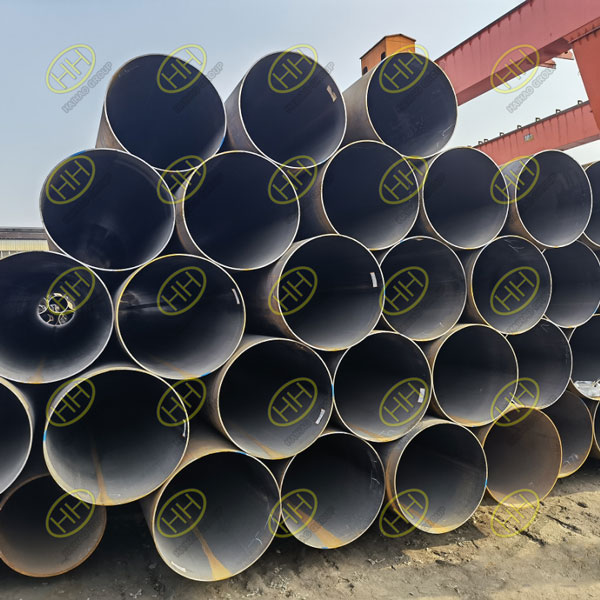What matters needing attention when large diameter straight seam steel pipe installation?
Large-diameter straight-seam steel pipes are widely used in natural gas, petroleum, chemical industry and other fields, generally referring to straight-seam steel pipes with an outer diameter of over 500mm. The common product models are: φ 325× 8-20, φ 426× 8-30, φ 450× 8-40 and φ 508× 8-40.
Due to the heavy weight of large-diameter straight-seam steel pipe, special attention should be paid to the installation process, not only the installation specifications, but also the personal safety of the installer. What should be paid attention to when installing large diameter straight seam steel pipe?

Large diameter straight seam steel pipes
During installation, the sandy soil shall be leveled first, and then compacted with flat vibrating rammer. The smoothness, height, thickness, width and compactness of sand cushion must meet the design requirements. Straight-seam steel pipes can only be lowered after passing the inspection.
The straight seam pipe and pipe used in the tap water pipeline project should meet the requirements of relevant product standards and design regulations in China, and there is a factory certificate to ensure that the material does not pollute the water quality.
Large-diameter straight-seam steel pipes shall be hoisted with slings or special tools. In the process of transportation, they should be packed and fastened, and they cannot collide with each other.
After checking the bottom of the tank, check the positions of pipe joints and fittings, and then lower the straight-seam steel pipe.In addition, a working pit should be dug at each joint, and the size of the working pit should be suitable for the convenient installation of the pipe joint.
When lowering the pipeline, use two cranes to hang the two ends of the steel pipe respectively, wrap the pipe body with high-strength nylon belt, and then slowly lower it into the foundation groove.
The crane should be commanded by specially designated personnel. The lifting speed should be uniform, the rotation should be stable, and the lowering speed should be low. The crane should not suddenly slow down or brake.
